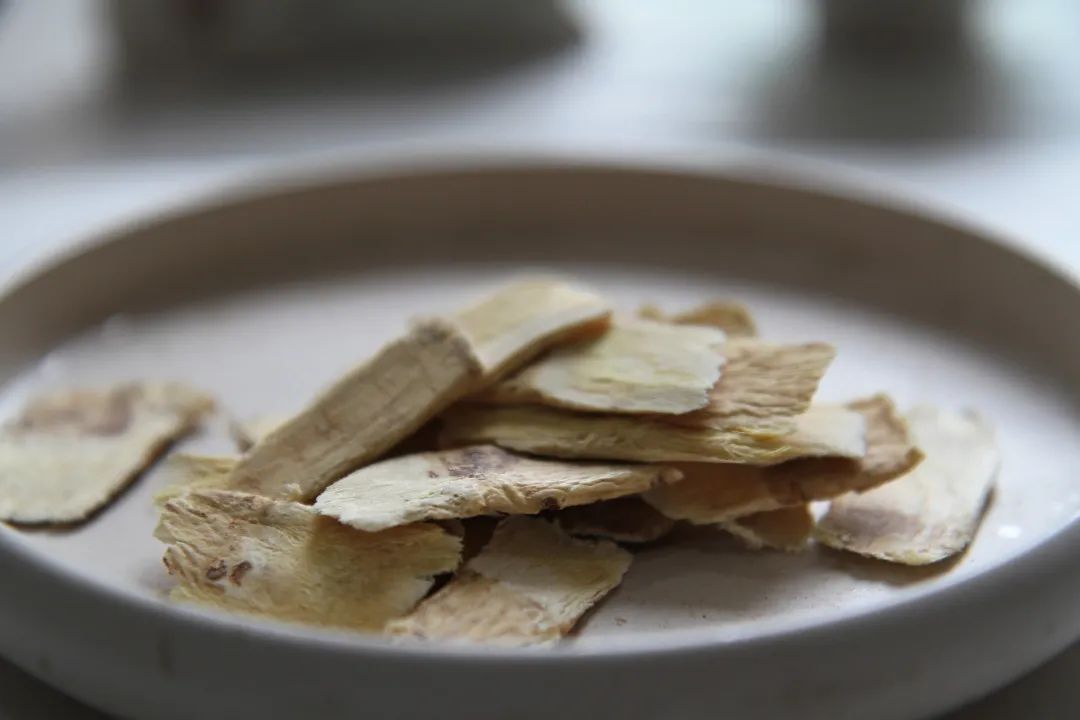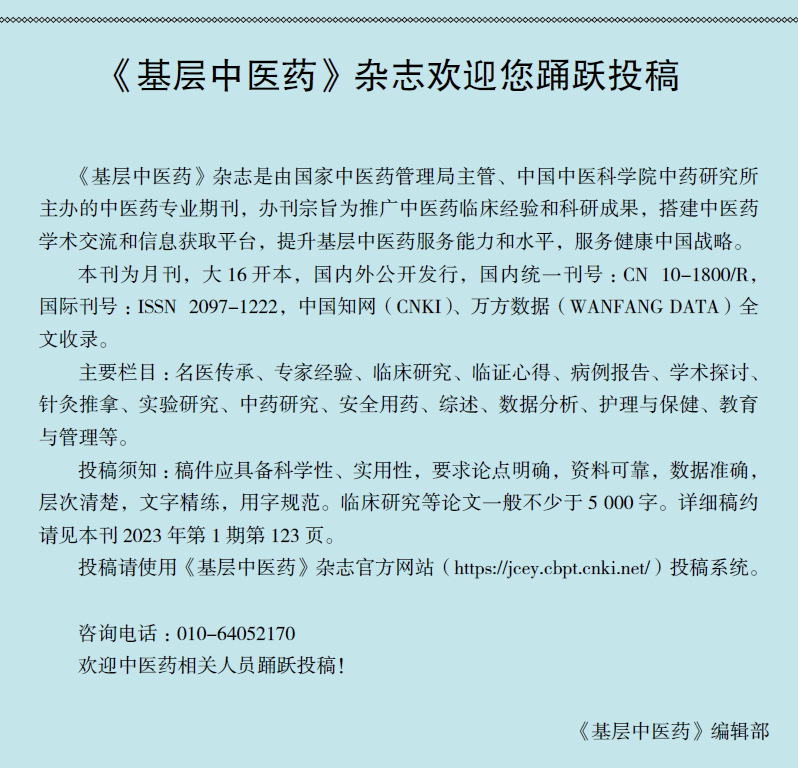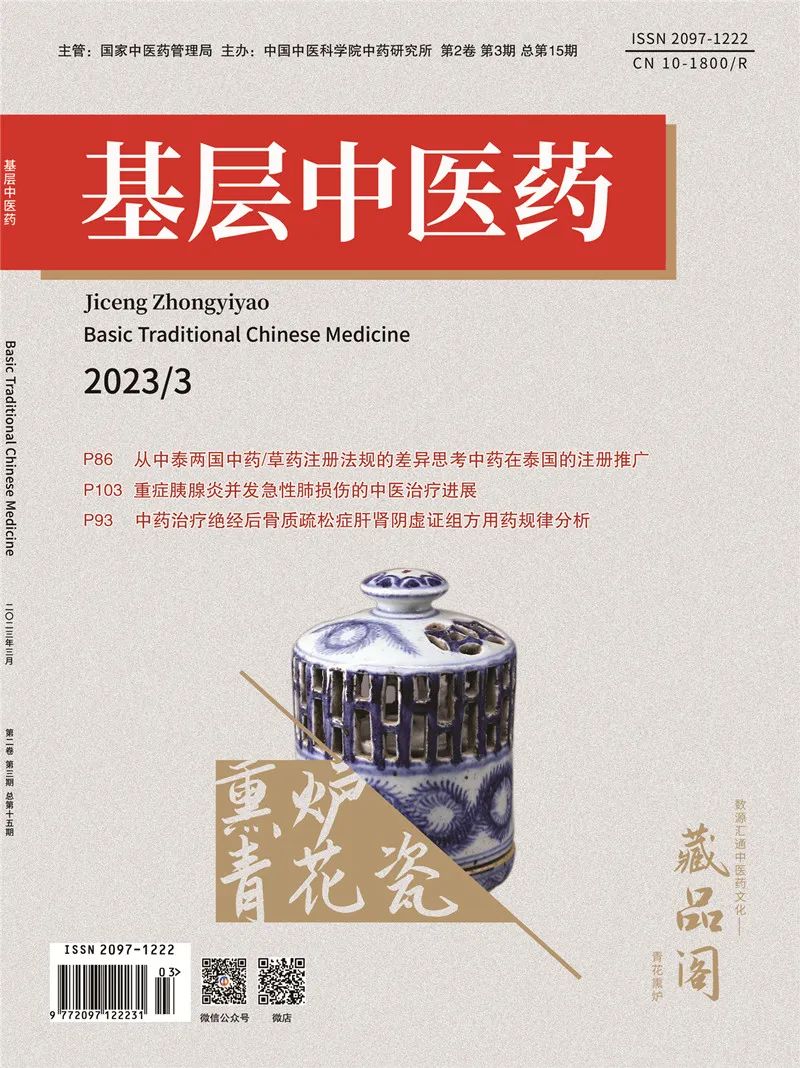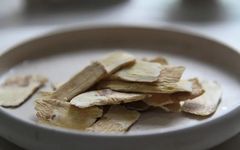Effective Use of Astragalus in Herbal Medicine
Tianjin/Wang Yan


The Qing Dynasty physician Xu Huixi stated: “The use of herbs may depend on their aroma, flavor, color, shape, quality, nature, the time of their harvest, or the place of their production.” This is almost a traditional principle for exploring the medicinal properties of Chinese herbs, which has been followed by physicians throughout the ages.
Astragalus, known in ancient times as Huang Qi, means “long” as it is yellow in color and is the foremost herb for tonifying Qi. Historically, it is best produced in the Longxi area (now eastern Gansu Province, upstream of the Wei River) and in the Qinzhu Mian area of Shanxi Province (now southeast of Jiexiu, upstream of the Zhuozhang River, now renamed Qinxian), specifically referred to as Mian Qi. The Song Dynasty scholar Su Song aptly noted: “The Astragalus from Mian is soft and pliable like cotton, hence it is called Mian Qi.” Astragalus is sweet in flavor, slightly warm in nature, yellow in color, entering the spleen and heart, and white in color entering the lungs. Both the spleen and lungs belong to the Taiyin of the foot and hand, making it a medicine for tonifying Qi and raising Yang. When used in conjunction with other herbs, its efficacy can be enhanced.
Astragalus with Fang Ji (Stephania Tetrandra)
Astragalus tonifies Qi and promotes fluid metabolism, while Fang Ji opens the meridians and promotes the movement of water and dampness. The combination of these two herbs enhances Qi tonification and promotes the downward flow of fluids, achieving a balance between external expression and internal communication, facilitating the movement of the meridians, and promoting the expulsion of dampness without depleting the righteous Qi, working synergistically to enhance Qi, promote fluid metabolism, and strengthen the exterior while dispelling dampness.
Clinical experience: Adding these two herbs to formulas such as Jisheng Shenqi Wan, Shuilu Erxian Dan, Wuling San, and Wupi Yin, along with 20-40 grams of Juechang (Polygonum Aviculare) (ground into powder and taken), can yield good results in alleviating edema and proteinuria.
Astragalus with Corn Silk (Zea Mays)
Astragalus nourishes the original Qi of the spleen and lungs, tonifying Qi and raising Yang while promoting the downward flow of turbid fluids. Corn silk promotes the drainage of dampness and heat, reducing swelling. The two herbs work together to raise clear Yang and lower turbid Yin, with sweet warmth tonifying Qi without promoting dampness, and draining damp heat without harming the righteous Qi. Together, they achieve the effects of tonifying Qi, raising Yang, promoting fluid metabolism, and reducing turbidity.
Clinical experience: When treating urinary system diseases characterized by Qi deficiency and damp-heat stagnation, the combination of these two herbs can effectively reduce swelling, alleviate proteinuria, lower blood pressure, and reduce cholesterol levels. Additionally, for chronic prostatitis, using these two herbs can yield good results.
Astragalus with Honeysuckle (Lonicera Japonica)
Astragalus tonifies Qi and raises Yang, while Honeysuckle clears heat, detoxifies, and cools the blood. It is an essential herb for treating sores and toxic swellings. The combination of these two herbs tonifies and clears, providing nourishment without promoting heat, and clearing without harming the righteous Qi, demonstrating significant detoxifying and clearing effects.
Clinical experience: For sores and toxic swellings, non-healing wounds, diabetic ulcers, and those with a tendency to develop sores, the combination of these two herbs, when decocted and consumed, can yield good results. For chronic nephritis with Qi deficiency and heat toxin accumulation, where kidney function is impaired and proteinuria persists, the combination of these two herbs can support Qi, strengthen the righteous, combat nephritis, detoxify, and clear turbidity without harming the righteous Qi or promoting damp-heat. This combination is also beneficial for chronic hepatitis with Qi deficiency and residual heat, leading to liver function impairment.
Astragalus with Mimosa Bark (Mimosa Pudica)
The combination of Astragalus and Mimosa Bark can tonify Qi, detoxify, and reduce abscesses, invigorate blood circulation, and promote tissue regeneration. Astragalus tonifies Qi and detoxifies, while Mimosa Bark resolves stagnation and invigorates blood circulation. Together, they enhance each other’s effects, promoting Qi tonification, supporting the righteous, invigorating blood circulation, detoxifying, and reducing abscesses.
Clinical experience: For lung abscesses and intestinal abscesses with chronic Qi deficiency, where pathogenic toxins are not strong and abscesses do not heal, the combination of these two herbs can yield good results. In cases of tuberculous peritonitis with Qi deficiency and unresolved pathogenic toxins, the combination can enhance therapeutic effects. For ulcer disease characterized by middle Qi deficiency and stagnation, the combination can also yield good results.
Astragalus with Wu Jia Pi (Acanthopanax Gracilistylus)
Astragalus benefits heart Qi and promotes blood circulation, while Wu Jia Pi dispels wind-dampness, tonifies the liver and kidneys, and invigorates blood circulation. The two herbs work together to benefit heart Qi and dispel wind-dampness, achieving a synergistic effect that promotes heart Qi, invigorates blood, dispels wind-dampness, and strengthens the bones and muscles. Clinical experience: Pharmacological studies have shown that Astragalus enhances cardiac contraction in normal hearts, and its cardiotonic effects are more pronounced in hearts weakened by toxicity or fatigue. For chronic bi syndrome, where heart Qi is affected, leading to blood circulation issues manifesting as palpitations, shortness of breath, pallor, joint swelling and pain, and susceptibility to external pathogens, the combination can enhance therapeutic effects. Additionally, for cardiac edema and renal edema, the combination can also yield therapeutic effects.
Astragalus with Bai Zhu (Atractylodes Macrocephala)
The combination of these two herbs can tonify Qi, strengthen the spleen, and promote fluid metabolism. Astragalus greatly tonifies the Qi of the spleen and lungs, strengthens the spleen, and regulates water metabolism, addressing both superficial and internal fluid issues. Bai Zhu strengthens the spleen and promotes fluid metabolism, tonifying the spleen and benefiting Qi. Together, they significantly enhance the Qi transformation of the spleen and stomach, invigorating vitality, tonifying spleen Qi to transform water, promoting spleen Qi to circulate fluids, and elevating spleen Qi to lower water retention, addressing both superficial and internal fluid issues.
Clinical experience: Pharmacological studies have shown that Astragalus protects liver and kidney function, promotes metabolism, and has significant and lasting diuretic effects. Conditions such as Qi deficiency with stagnant water, chronic pain, joint pain, edema, and pseudo-hypertrophy of limbs can all benefit from Astragalus as a key herb. The combination of Astragalus and Bai Zhu is effective in alleviating edema, reducing proteinuria, improving nutritional status, enhancing kidney function, and boosting the body’s resistance to disease. Renowned TCM physician Jiang Chunhua treated ascites due to liver cirrhosis in patients with middle Qi deficiency, using 15-30 grams of Astragalus and 30-60 grams of Bai Zhu, following the principle of “blocking and using” to prevent hepatic coma and enhance the function of blood-activating and stasis-removing herbs. Famous TCM physician Gu Pirong also used over 30 grams of Bai Zhu for liver cirrhosis with severe cases up to 60 grams. If the tongue coating is sticky, Bai Zhu should be used raw; if the tongue is pale with thin white coating and teeth marks, Bai Zhu should be used fried; if the tongue is red with little coating, Bai Zhu should be used roasted. Bai Zhu not only has the function of tonifying Qi, strengthening the spleen, and drying dampness, but also promotes urination, reduces edema, resolves blood stasis, and nourishes body fluids. It can be used for liver cirrhosis with spleen deficiency and also for liver Yin deficiency.


National Administration of Traditional Chinese Medicine Supervised
Institute of Chinese Materia Medica, Chinese Academy of Traditional Chinese Medicine Organized
Traditional Chinese Medicine Knowledge Health and Wellness Information



Article copyright belongs to Family Traditional Chinese Medicine, unauthorized reproduction or excerpt is prohibited. Image copyright belongs to the original author.
Herbal formulas should be used under the guidance of a physician.
Author of this article:Wang Yan
Editor of this article:Xiu Long


